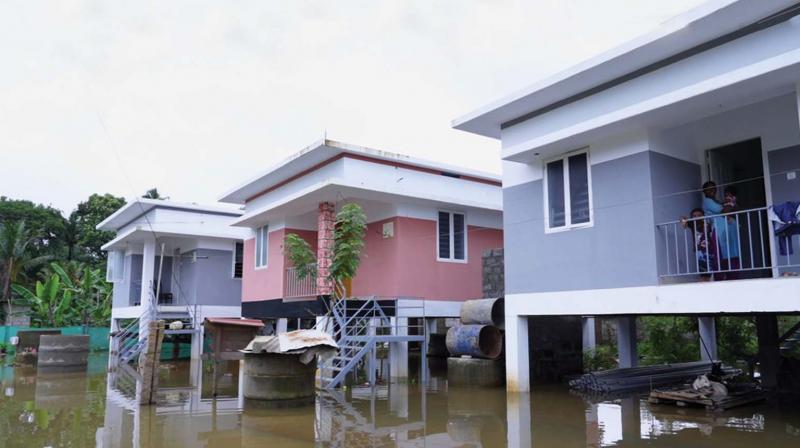Homes that build hopes
Finally, after facing the fury of nature for two years in a row, Malayalis are ready to accept the idea of low-cost, environment- friendly houses.

Kerala is not just known for its natural beauty. One cannot deny the fact that Malayalis have an exquisite taste for good and palatial houses. The unique architectural concepts that are experimented in various houses built in the state are the testimony. At a time when people were observing the anniversary of the never-ending miseries that the devastating flood of 2018 had given, expecting not to encounter a natural calamity of such severity in future, the deluge wrecked mass destruction in the state once again, taking the lives of many and leaving even more homeless. It is high time people changed their minds and embraced the thoughts of experts and architects who have always been urging us to shift to eco-friendly, low-cost houses that can withstand natural calamities and even if get destroyed, do not cause much harm to life and money.
The wave of rebuilding the state, however, saw many organisations and architects coming forward with interesting and different ideas for constructing houses, which have never been used in Kerala but are definite to seamlessly gel with the landscape and weather conditions here. Pre-fab is an updated and sustainable solution
It was the pathetic condition of those who had lost their homes in the 2018 floods that triggered the idea in Mohammed Rafiq’s mind to provide them with a shelter at the earliest, which according to him would lend them the support to fight the odds with a positive mindset.
Rafiq has been associating with Thanal, an NGO based in Kozhikode that collaborates with various architects to build houses for those who lost their homes in floods, for the past two years. His firm has built around 100 houses using different techniques that can overcome natural calamities.
Commenting on the agenda that they follow to build such houses, Rafiq says, “The most important aspect that we had on our mind while creating the plan for the houses was that, we need to come up with an idea that allows us to construct the houses in the shortest possible time. We, therefore, came up with a design using pre-fabricated material that could be over in a span of two weeks. Moreover, the houses were constructed on pillars at a height of six ft from the ground, thus keeping them safe from flood waters and mud that otherwise clogs the foundation. It is also a light-weight material, which would withstand the force of wind and water, and even if the structure crumbles, there won’t be series causalities. Another method that we implemented on a land that was already a water-logged property was to erect pillars and place concrete slabs on them before constructing the house. It is important to check the characteristic features of the land where the construction is to be made.”
Rafi adds that pre-fab is the future with regard to constructing houses. “if reports are to be believed, strict regulations will be imposed on mining and that time is not far when sand and rock will cost more than gold,” he adds.
People should be open to accept the change in technology
Nanma Girish, a civil engineer and co-founder of NestAbide, has been researching various techniques that can be used to construct homes typical to Kerala, yet by implementing ideas that will be helpful at times of natural calamities. When she introduced an idea called Amphibious houses — which are fixed to a buoyant base that rests on the ground, but are also designed to float when flood waters rise, temporarily creating a floating structure — people were not ready to accept that such a technology even exists. However, after the flood waters wreaked havoc for two consecutive years, people are only bothered if such buildings are feasible in Kerala.
Elaborating on the different types of houses that can become a future trend, she says, “Raised buildings are actually a very good option and those built with pre-fab have multiple advantages including relocation. However, one of the disadvantages is that if we are not sure about the limit till the water rises (which is next to impossible), even the pillars may not save the house. I would also suggest that we start adopting the practice of floating houses because though it might not seem that important at this point of time, it is definitely going to be useful in the future.”
Nanma adds that our traditional techniques like sloping roof and building verandas around the house have important parts to play when protecting the structure of the building from collapsing.
“The only thing we need to understand is that we can create a traditional Kerala house or a contemporary house with light-weight, eco-friendly materials as well. This will reduce the cost, save time and the house will also withstand natural calamities. What better can we ask for?” she concludes.

